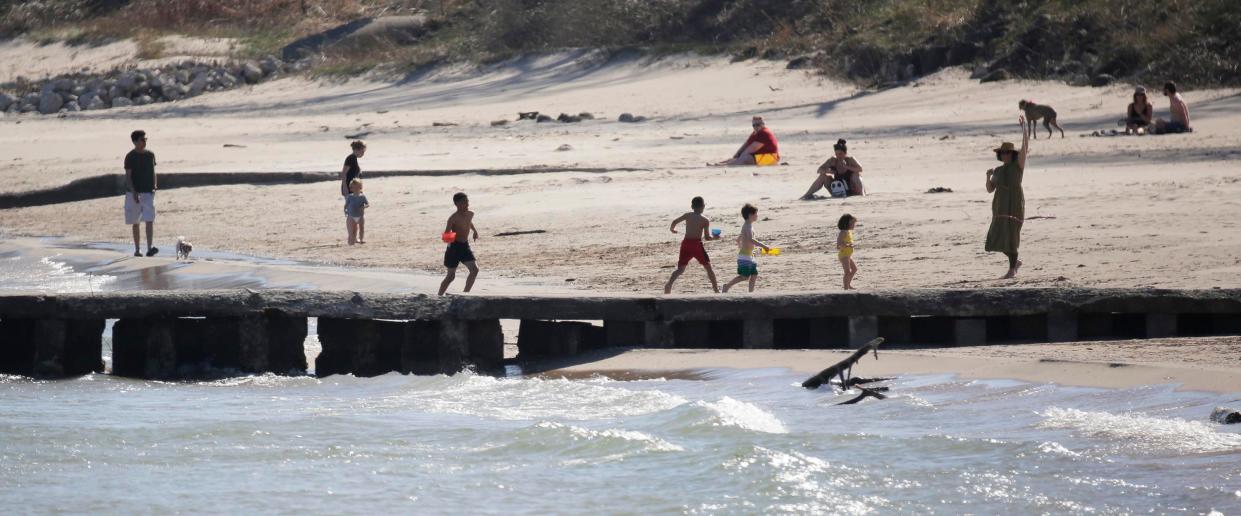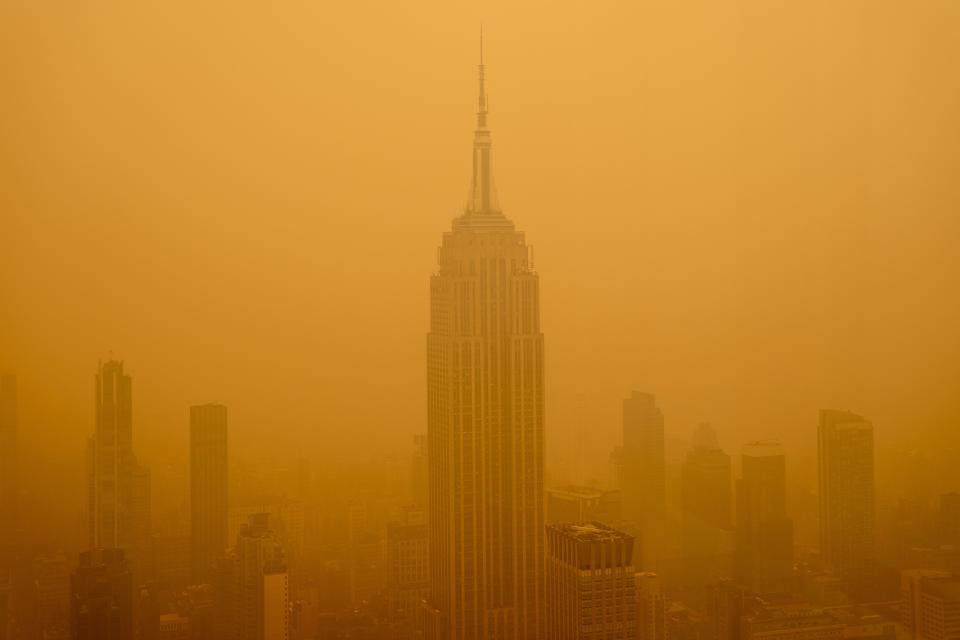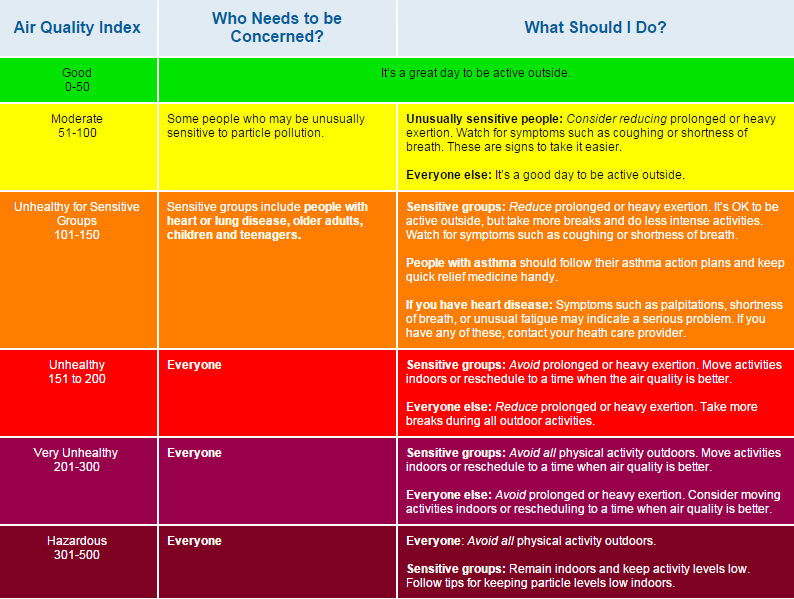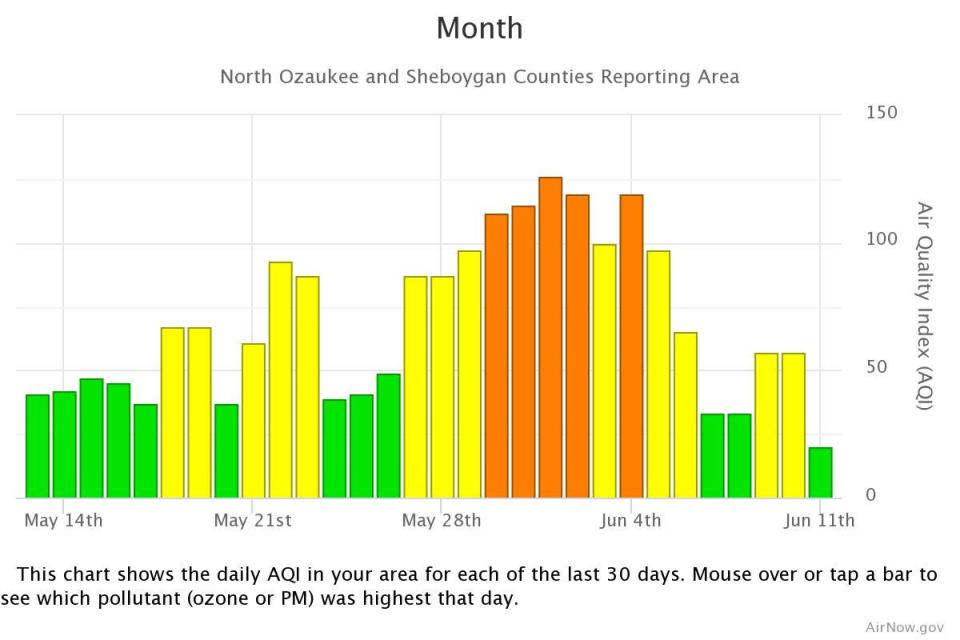Air quality has already been an issue in Sheboygan this year. Here's how to stay safe this summer.

SHEBOYGAN – Keeping watch on local air quality is key when deciding to spend time relaxing on the beach or playing at a park.
Air quality concerns in Sheboygan are not new, as the lakeshore region has recorded a handful of days with ozone levels above federal standards each year. But with news of massive wildfires in Canada, a blanket of orange haze in New York City and warming weather, air quality will be an even greater issue this summer in Sheboygan.
Here are six things to know to better protect your health this summer.

1. What is the Air Quality Index?
The U.S. Environmental Protection Agency’s Air Quality Index (AQI) communicates how clean the air is during a given day. The concentration of pollutants, like ground-level ozone and particulate matter, are measured in the air.
Ozone is the result of a chemical reaction between volatile organic compounds (chemicals that can easily evaporate into air and water), nitrogen oxides (possibly from vehicle exhausts and power plants), heat and sunlight.
Particulate matter (PM) is the combination of liquid droplets and several compounds found in the air, like smoke, dust, pollen, mold spores, organic chemicals and metals.
Many state and local agencies use AQI to inform the public about air quality forecasts.
2. When is it safe to go outside?
It depends. A “Good” level (index of 0 to 50) poses no health risk to all individuals.
Monitoring the air quality as the index increases — “Moderate” levels (51 to 100 index) and “Unhealthy for Sensitive Groups” levels (101 to 150) — becomes especially important for sensitive groups.

The EPA recommends sensitive groups reduce activities that require long and heavy physical exertion outside at these levels. Also, try to exercise away from busy roads and busy times of the day and take more breaks than usual.
As air quality reaches indexes 151 and above, both non-sensitive and sensitive groups are at higher health risks. The EPA suggests avoiding prolonged or heavy exertion outdoors or stopping all outdoor physical activity.
3. Who is part of a ‘sensitive group’?
Individuals with heart or lung diseases (like congestive heart failure and coronary artery disease and asthma), older adults, teenagers and children are classified in the EPA’s sensitive groups.
Particles in the air can aggravate illnesses and can enter the lungs more easily in older adults and children, especially when physically active, according to the EPA.
4. How does poor air quality impact your health?
Generally, exposure to air pollutants can result in heart and lung issues, according to the EPA.
High levels of ozone and particulate matter can affect the heart and lungs. Smaller particles are more dangerous, as inhaling them can lead to embedding in the lungs and entering the bloodstream. Effects of short-term exposure can range from irritated breathing to asthma attacks if an individual has pre-existing health conditions.
Long-term exposure, likely for communities living in an area of high particulate matter for years, can lead to reduced lung function and chronic bronchitis, according to the EPA.
5. Do I need to wear a mask if I go outside in bad air?
You shouldn’t need to wear a mask unless particle concentration reaches “Unhealthy” or “Very Unhealthy” levels, which happened on the East Coast recently.
Unless air quality reaches those levels, following the EPA guidelines for reducing or refraining from physical activity outside should be sufficient.
6. Why are people concerned about Sheboygan's air quality?

Sheboygan and the state of Wisconsin were heavily impacted by wildfires and smoke sweeping across Canada, resulting in five of seven days having an orange alert (index of 101 to 150) little over a week ago. The majority of those days had high ozone levels.
Without the wildfire smoke, Sheboygan County, as a whole, still has days that test above the federal standard for ozone.
EPA preliminary data show the Kohler-Andrae State Park monitor averaged five days and the Haven monitor averaged four days above the federal eight-hour ozone concentration during the 2022 ozone season (end of March to mid-October).
The county and state are heavily impacted by mobile sources on the road, like cars and trucks, and pollutants traveling across state lines, according to the Wisconsin Department of Natural Resources.
7. Where can I find air quality information?
Weather apps and websites might forecast the air quality for the day. The DNR also sends out alerts via email or text messaging. You can sign up for statewide or county information here.
More: Company no longer pursuing wind turbines in Sheboygan County, and 3 more updates in county news
More: This year's funding kept the Open Door operating. But now staff are struggling to adjust.
Contact Alex Garner at 224-374-2332 or agarner@gannett.com. Follow her on Twitter at @alexx_garner.
This article originally appeared on Sheboygan Press: Sheboygan air quality: 7 things to know to stay safe this summer

